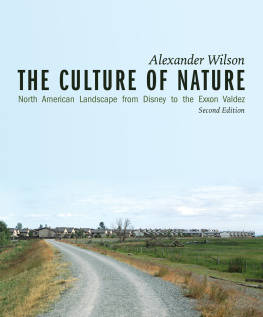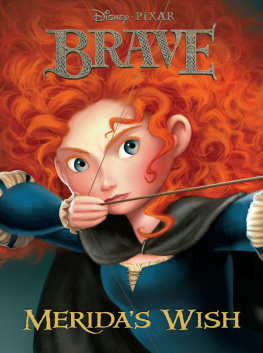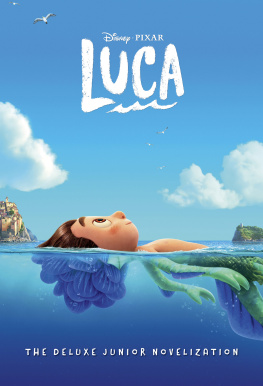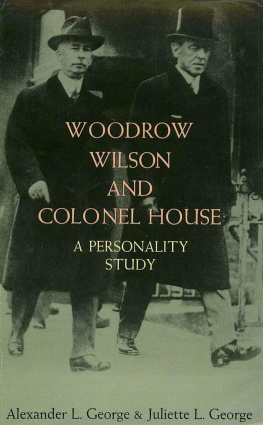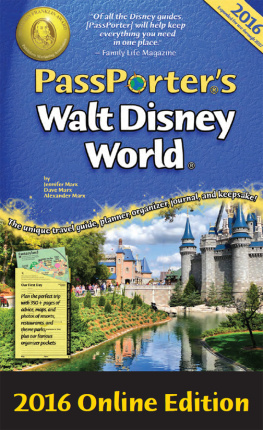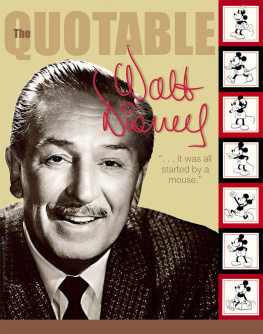Contents
Guide

My first experience with Alex Wilson was in a packed, steamy room at the University of Waterloo at an early conference of the Society for Ecological Restoration in 1992. He organized a session that argued the soul of restoration was interdisciplinary, culturally aware, politically sensitive, ethically engaged, and continuously observant. Standing and gesticulating amidst restoration scientists and practitioners, this was the same Alexander Wilson who had authored The Culture of Nature, a book that shook my world the year before. At once erudite, playful, scholarly, and urgent, Alex picked up the temper of the times, and with enviable prescience connected the engaged practices of landscaping, gardening, and restoration to a cultural theory of nature and the fever dreams of those who chose to colonize imagination. It is testament to Alexs particular genius that it emerges for a new generation, who will find the messages eerily fresh, provocative, and profound.
Eric Higgs, professor of environmental studies, University of Victoria, former chair of the Society for Ecological Restoration, and author of Nature by Design
When I first read The Culture of Nature in the 1990s, I was entranced by Alexander Wilsons brilliant, original, generous road trip through North American cultural ecologies; the book appeared on many course syllabi in my early years teaching Environmental Studies. Reading the book again nearly 30 years later, I am struck by the fact that, although a great deal has changed the internet, the re-entrenchment of the far Right, the intensification of struggles for social and environmental justice by racialized groups and Indigenous peoples many of Wilsons insights remain as sharp now as they were then. In this era of deepening ecological and climate crisis, we must think about landscapes as sites of ecological, technological, cultural, social, political, and imaginative entanglement. In particular, in Wilsons own words, we must build landscapes that heal, connect, and empower, that make intelligible our relations with each other and with the natural world.
Catriona (Cate) Sandilands, professor and PhD program coordinator, Faculty of Environmental Studies, York University
The Culture of Nature
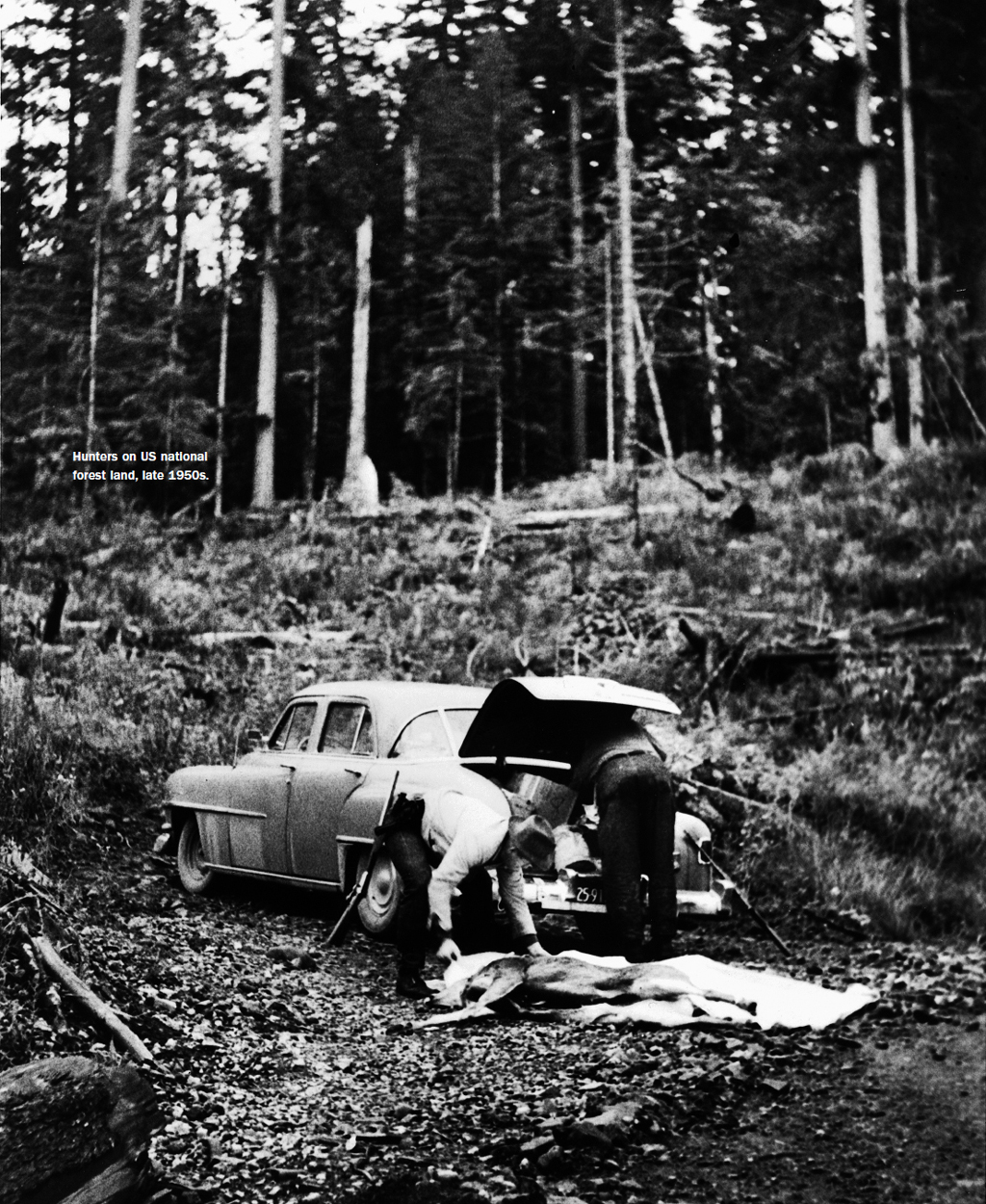
The Culture of Nature, second edition
1991, 2019 Alexander Wilson
First published by Between the Lines
401 Richmond Street West
Studio 281
Toronto, Ontario M5V 3A8
Canada
1-800-718-7201
www.btlbooks.com
All rights reserved. No part of this publication may be photocopied, reproduced, stored in a retrieval system, or transmitted in any form or by any means, electronic, mechanical, recording, or otherwise, without the written permission of Between the Lines, or (for photocopying in Canada only) Access Copyright, 69 Yonge Street, Suite 1100, Toronto, ON M5E 1K3.
Every reasonable effort has been made to identify copyright holders. Between the Lines would be pleased to have any errors or omissions brought to its attention.
LIBRARY AND ARCHIVES CANADA CATALOGUING IN PUBLICATION
Title: The culture of nature : North American landscape from Disney to the Exxon Valdez /
Alexander Wilson.
Names: Wilson, Alexander, 1953 author.
Description: Second edition. | Includes bibliographical references and index.
Identifiers: Canadiana (print) 20190148721 | Canadiana (ebook) 2019014873X |
ISBN 9781771134101 (softcover) | ISBN 9781771134118 (EPUB) | ISBN 9781771134125 (PDF)
Subjects: LCSH: Human ecologyCanada. | LCSH: Human ecologyUnited States. |
LCSH: NatureEffect of human beings onCanada. | LCSH: NatureEffect of human beings onUnited States. | LCSH: NatureSocial aspectsCanada. | LCSH: NatureSocial aspectsUnited States. | LCSH: Philosophy of nature.
Classification: LCC GF75 .W57 2019 | DDC 304.2dc23
Text design by David Vereschagin/Quadrat Communications
Cover photograph by Jeff Wall
Printed in Canada
[insert FSC logo and union bug]
We acknowledge for their financial support of our publishing activities: the Government of Canada; the Canada Council for the Arts, which last year invested $153 million to bring the arts to Canadians throughout the country; and the Government of Ontario through the Ontario Arts Council, the Ontario Book Publishers Tax Credit program, and Ontario Creates.

Contents
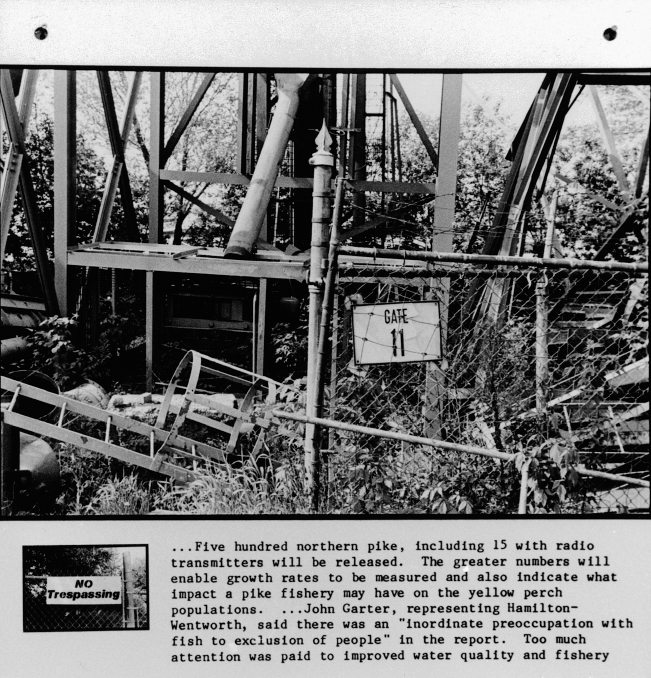
From No Trespassing, a series documenting the industrial zone along Lake Ontario at Hamilton. Photograph by Cees van Gemerden.
Acknowledgements
Writing a book is never done alone, as much as it might often seem so. Its a great pleasure to thank all the people who have over the years offered encouragement, advice, friendship, hospitality, and love, among them: Rosemary Donegan, Melony Ward, Peter Fitting, Lisa Bloom, loan Davies, Bruce Kidd, Colin Campbell, Gordon Montador, Dinah Forbes, Fredric Jameson, David Galbraith, Caroline Underwood, Marc Glassman, Janice Palmer, Audrey Sillick, Peter Baran, Frank Baumann, Pat Aufderheide, Carol McBride, Ron Ansbach, Victor Barac, Ian Balfour, Jim Winders, Christi Perala, Linda Aberbom, Raynald Desmeules, Bruce Russell, Robbie Schwartzwald, Tom Keenan, Monika Gagnon, Melanie McBride, Elena Orrego, Alejandro Rojas, Julia Mustard, Henry Kock, Chris Creighton-Kelly, David Orsini, Mark Lewis, Annette Hurtig, Jeri Hise, and Kim Delaney.
Special thanks to Robert Campbell at the Department of Fisheries and Oceans, Margaret Kelley at the East Bay Regional Parks District, Linda Barnett at the CBC Design Library, Bob Gray and Jim Taylor at Parks Canada, the Public Archives of Canada, the National Film Board of Canada, Monique LaCroix and Dawn Conway at the Canadian Commission for UNESCO, Ann Rowles at the Forest History Society, Bill Andrews at the Faculty of Education, University of Toronto, Jack Vallentyne at the Canada Centre for Inland Waters, Mary Keeling, Architectural Librarian at the Colonial Williamsburg Foundation, Sherry Pettigrew at the Northwest Wildlife Preservation Society, Steven Price at the World Wildlife Fund in Toronto, and the many other people who have generously answered my phone calls and inquiries.
Susan Willis, Roy Merrens, Deborah Esch, Mark Griswold Wilson, Stephen Andrews, Jody Berland, Andrew Ross, and Meaghan Morris read chapters and drafts of the manuscript over many years. Their comments gave me plenty to think about, and helped immeasurably to enrich the text. My editor Robert Clarke has with care and graciousness helped me clarify my arguments. A book about landscape calls for more than just words. Thanks to Lorraine Johnson for looking after the enormous task of picture research and to Greg Van Alstyne for the books design.
Ian Rashid, Marg Anne Morrison, and Pat Desjardins at Between the Lines have supported this book from the beginning, and I thank them. Generous grants from the Explorations Programme of the Canada Council and the Ontario Arts Council allowed me intermittently to take weeks and months off work to travel, lecture, and write.
Lastly Id like to thank my family: my mate Stephen Andrews; my late parents, Gris and Betsy Workman Wilson, who taught me early on to love this Earth; and my brothers Mark, Will, and Andy. To all of them this book will look and sound very familiar.

